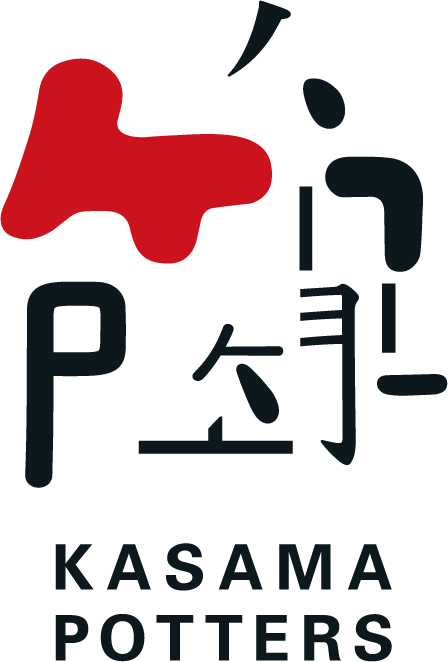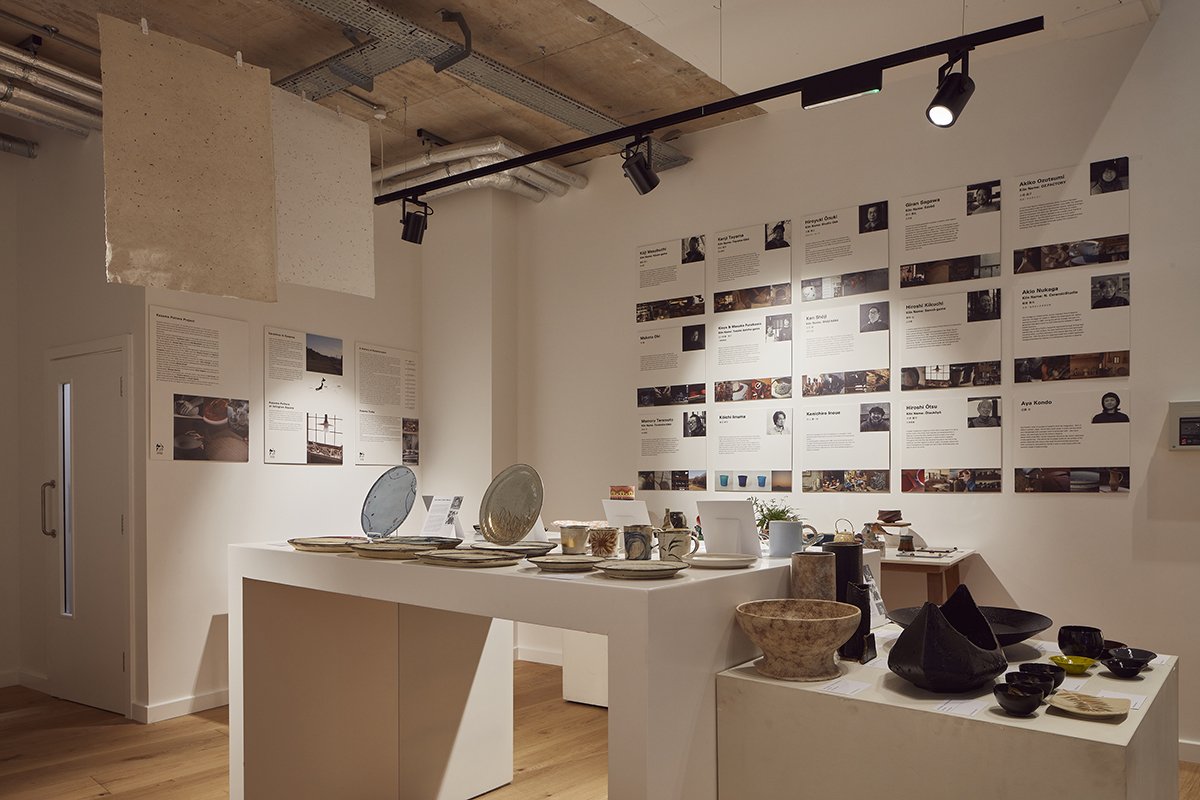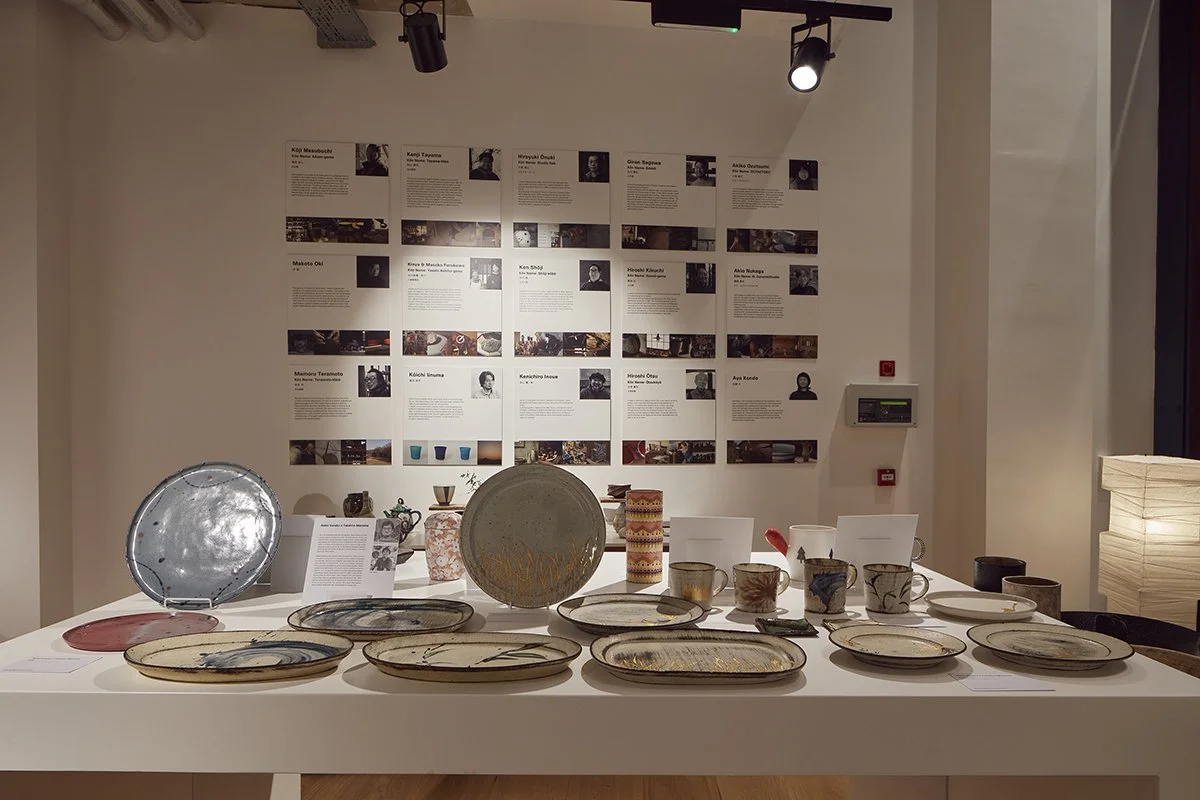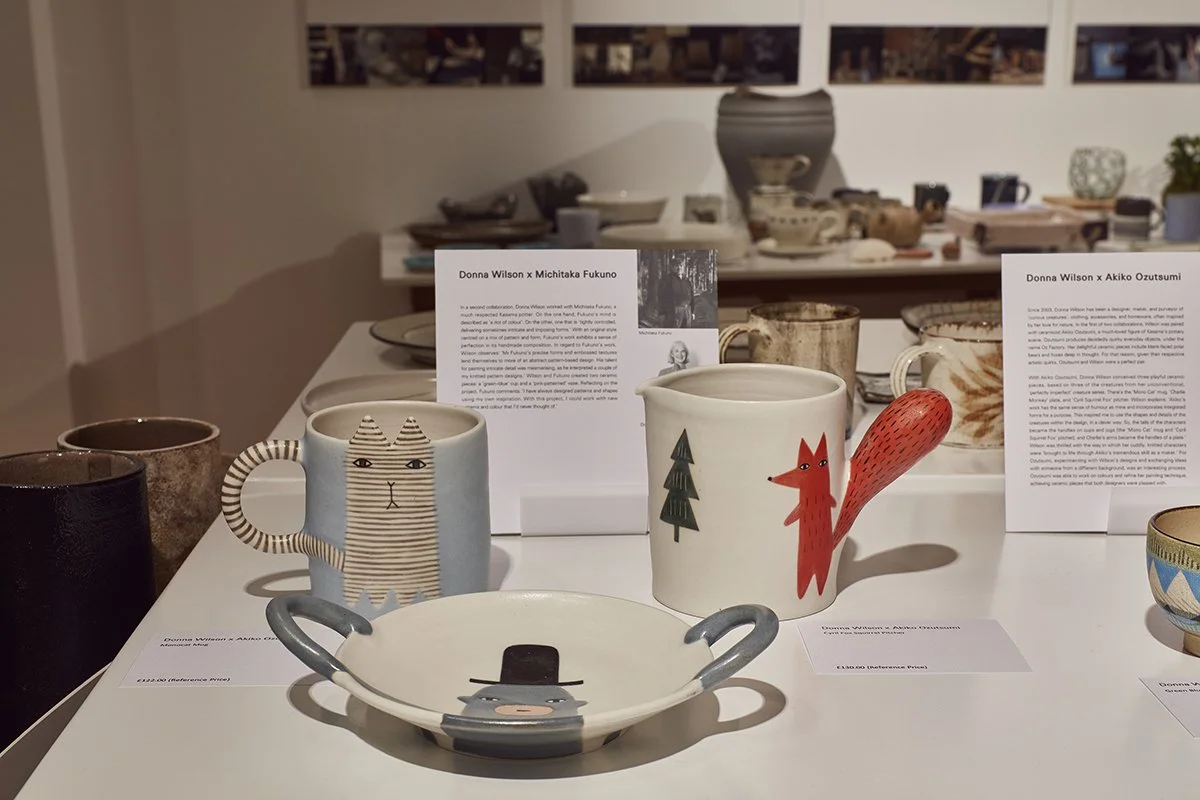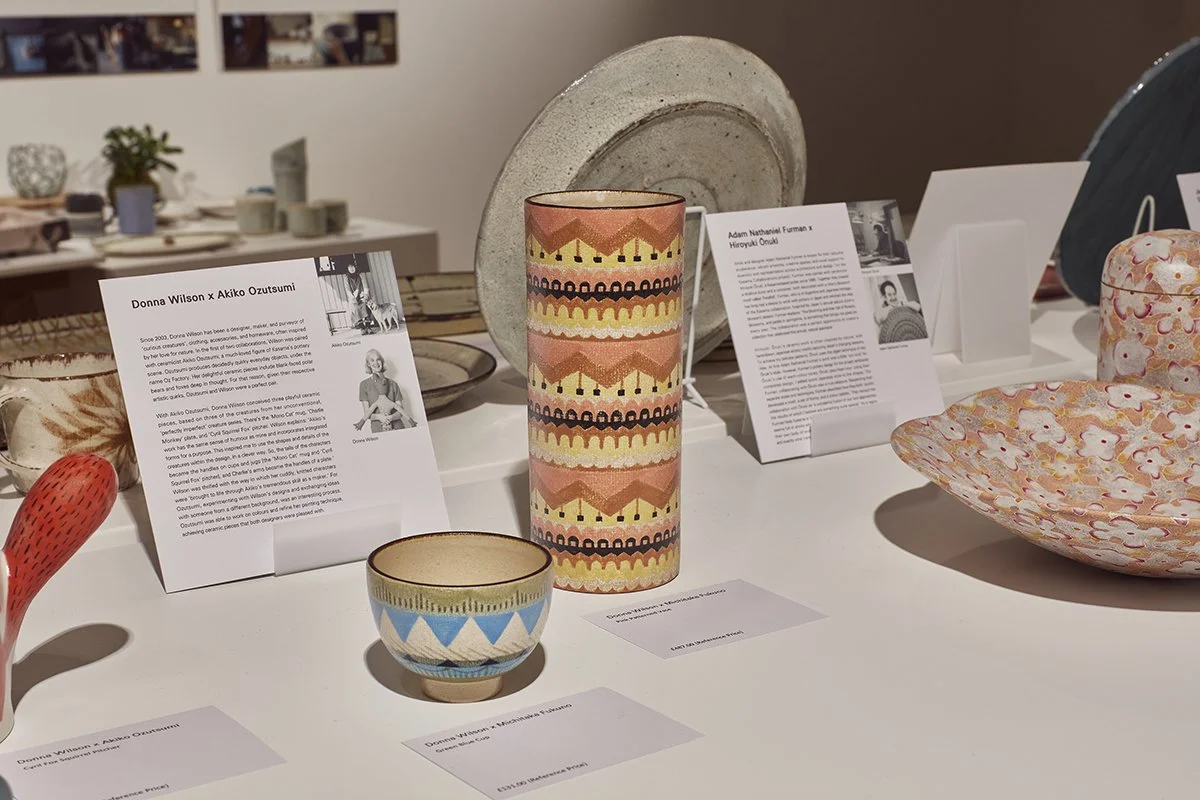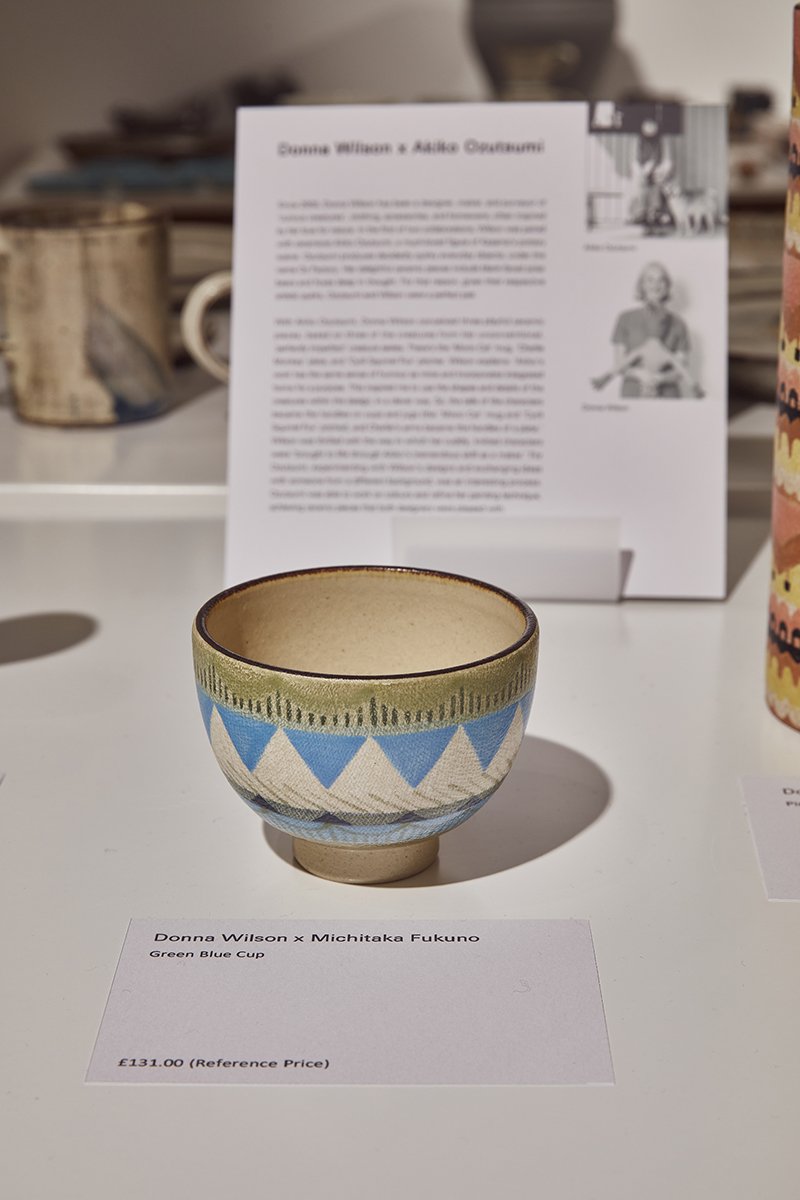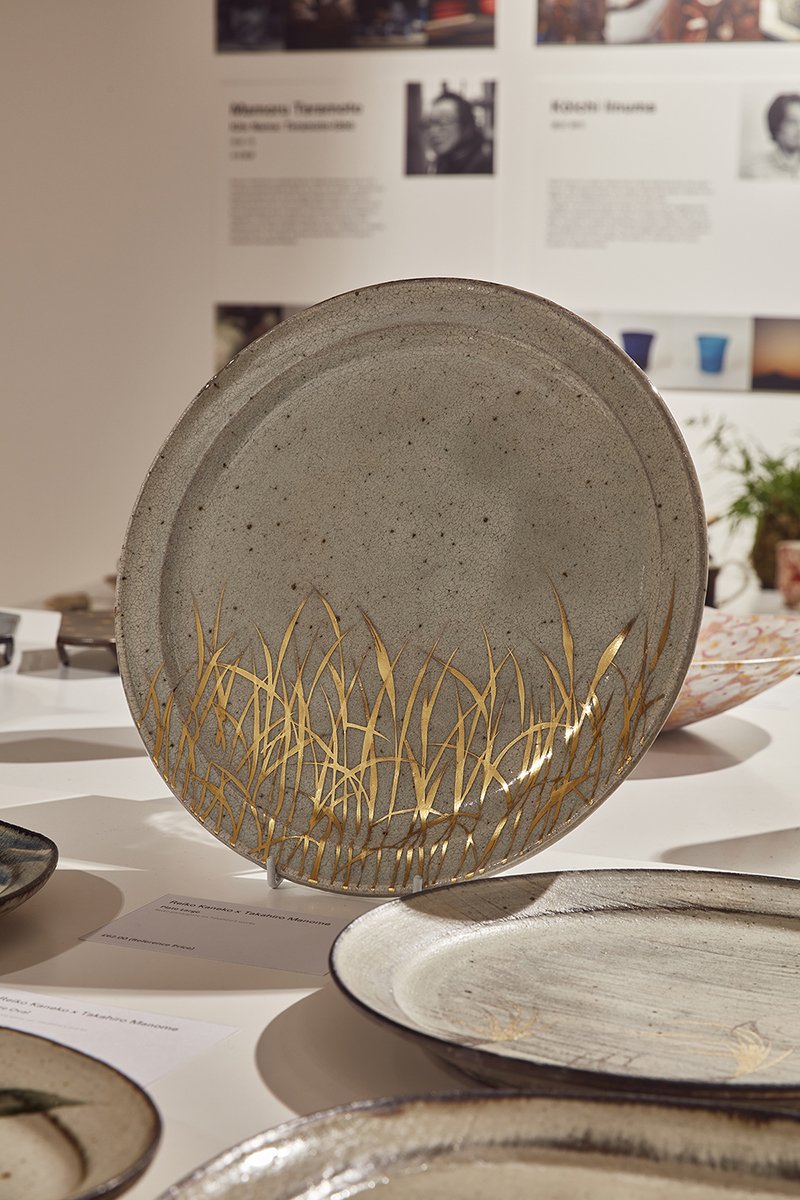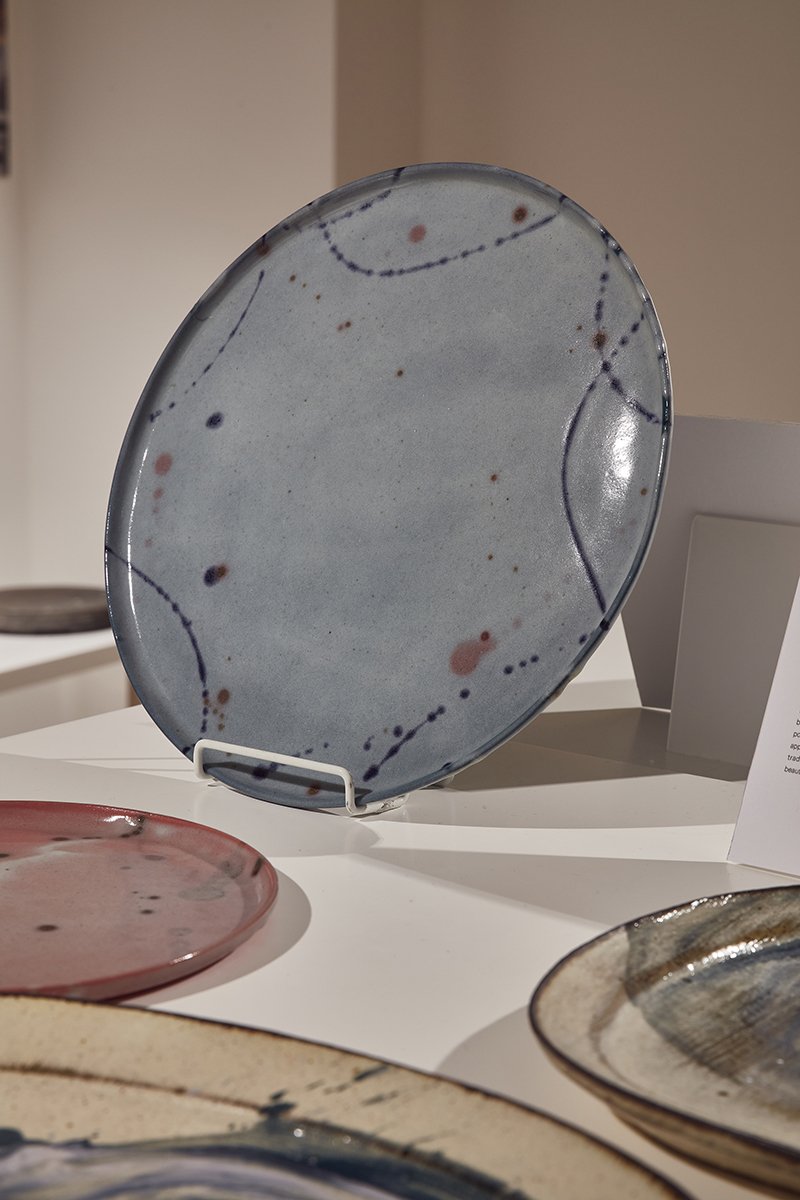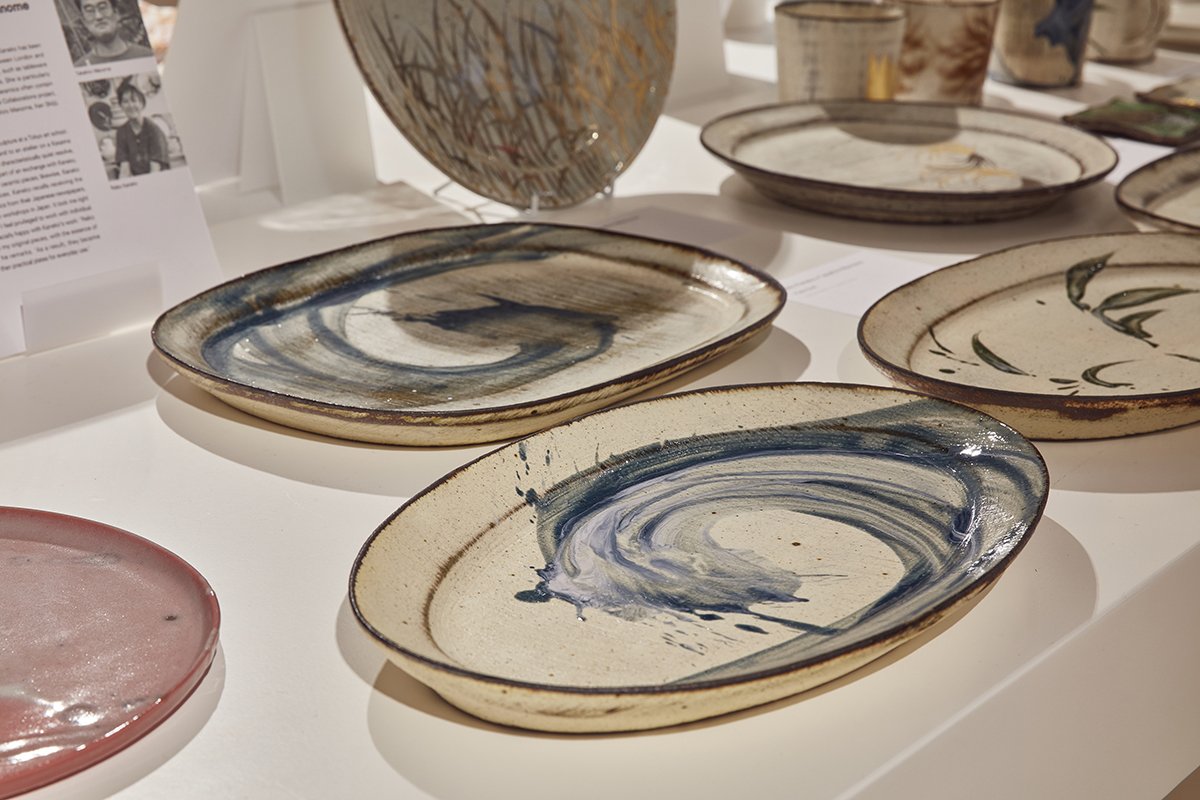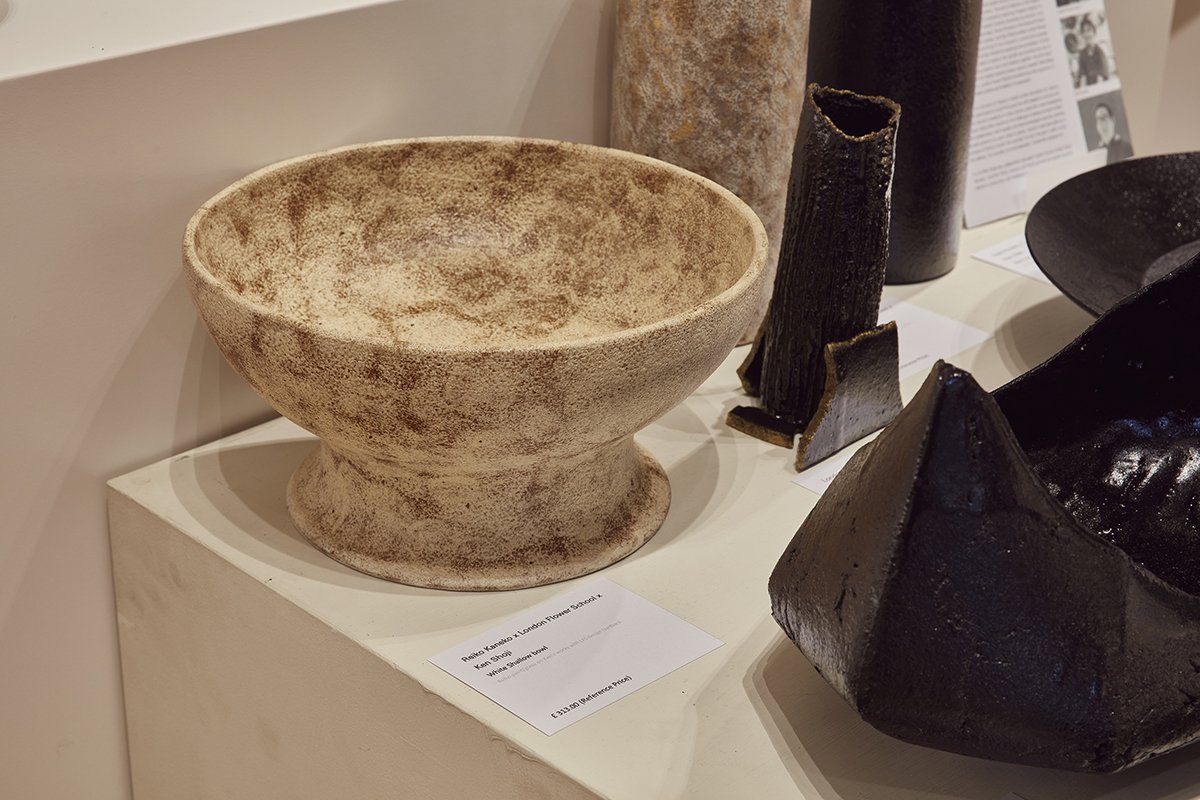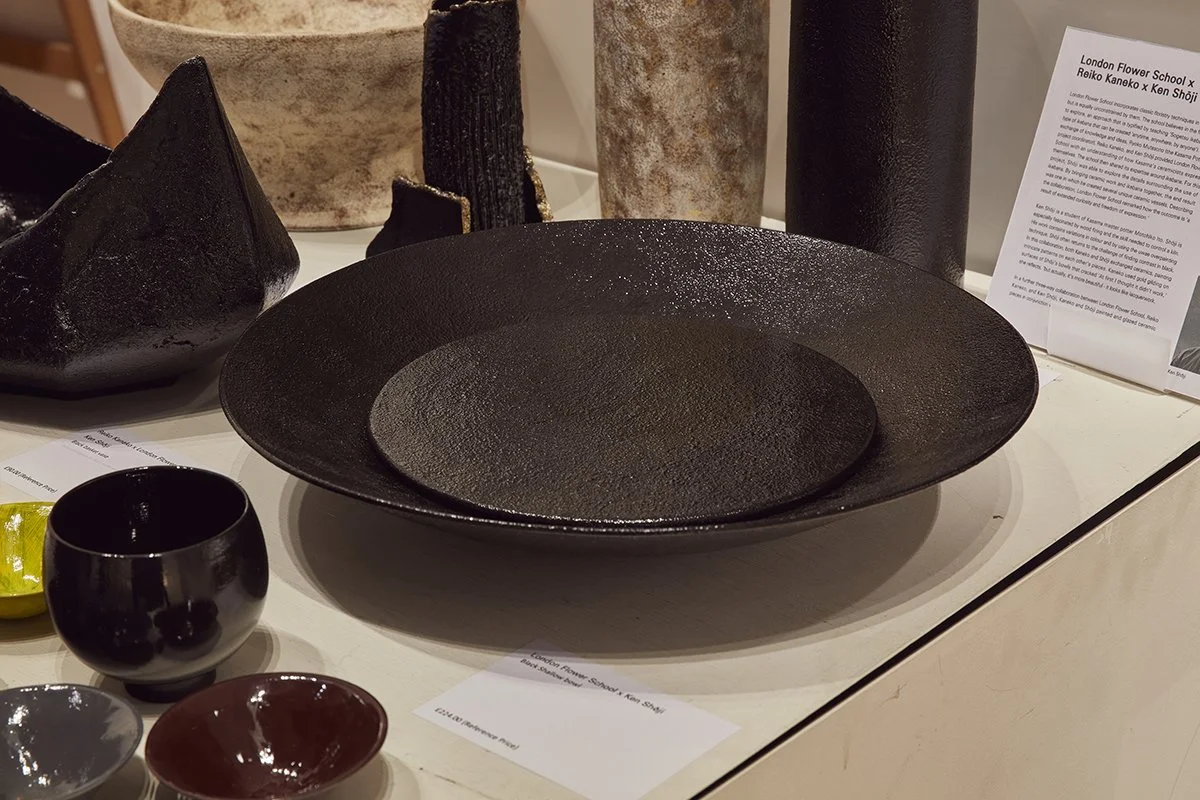10 Feb - 20 Mar ‘22: Kasama Collaborations - Connecting British designers and creatives with Kasama potters
Kasama Collaborations is an imaginative ceramic project that connects British designers and creatives with accomplished Japanese potters from the city of Kasama. In a cultural exchange of ideas and knowledge, the British creatives and Kasama potters made use of a variety of pottery techniques and skill to create innovative, design-focused pieces. The result of this fruitful East meets West endeavour is an artistic array of original ceramics.
Visitors to the Kasama Collaborations exhibition can expect inventive ceramic works that merge elements of both British and Japanese art and design. Kasama Collaborations is at North London’s Islington Square, where it is part of the latest Kasama Potters Showcase (taking place until 20th March 2022).
Those taking part in Kasama Collaborations are: Adam Nathaniel Furman, Donna Wilson, Reiko Kaneko and London Flower School (all UK-based); Hiroyuki Ōnuki, Akiko Ozutsumi, Michitaka Fukuno, Takahiro Manome, Ken Shōji, and Gilan Sagawa (all Kasama-based).
Adam Nathaniel Furman X Hiroyuki Ōnuki
Artist and designer Adam Nathaniel Furman is known for their colourful exuberance, vibrant artworks, creative spaces, and vocal support for diversity and representation across architecture and design. For the Kasama Collaborations project, Furman was paired with ceramicist Hiroyuki Ōnuki, a Kasama-based potter since 1995. Together they created a shallow bowl and a container, both decorated with a cherry blossom motif called ‘Petalfall’. Furman, who is of Argentine and Japanese heritage, has long had a desire to work with potters in Japan and relished the idea of the Kasama collaboration. Inspired by Japan’s annual sakura (cherry blossom) season, Furman explains: ‘The blooming and then fall of flowers, blossoms, and petals in springtime, is something that brings me great joy every year. The collaboration was a perfect opportunity to create a collection that celebrated this annual, natural spectacle.’
Hiroyuki Ōnuki’s ceramic work is often inspired by nature, with hand-drawn Japanese artistic motifs capturing Japan’s changing seasons. To achieve his delicate patterns, Ōnuki uses the zōgan technique of slip inlay. At first Adam Nathaniel Furman’s work was a little ‘too vivid’ for Ōnuki’s style—however, Furman’s pottery design for the project embraced Ōnuki’s use of warm colour tones. Ōnuki describes how ‘using their completed design, I added some Japanese style to the shapes.’ For Furman, collaborating with Ōnuki was a true pleasure. Respecting their separate styles and techniques, Furman describes how they both ‘quickly developed a motif, a set of forms, and a colour palette.’ They recount the collaboration with Ōnuki as ‘a wonderful fusion of our two approaches, the results of which I believe are something quite special.’ As a region, Furman feels Kasama is ‘something of a paradise.’ They further explain: ‘It seems full of artists whose values I share, and whose journey to building their own body of work—separate from fashion and trends—is inspiring, and exactly what I aim for in my career.’
Donna Wilson X Akiko Ozutsumi
Since 2003, Donna Wilson has been a designer, maker, and purveyor of ‘curious creatures’, clothing, accessories, and homeware, often inspired by her love for nature. In the first of two collaborations, Wilson was paired with ceramicist Akiko Ozutsumi, a much-loved figure of Kasama’s pottery scene. Ozutsumi produces decidedly quirky everyday objects, under the name Oz Factory. Her delightful ceramic pieces include blank-faced polar bears and foxes deep in thought. For that reason, given their respective artistic quirks, Ozutsumi and Wilson were a perfect pair.
With Akiko Ozutsumi, Donna Wilson conceived three playful ceramic pieces, based on three of the creatures from her unconventional, ‘perfectly imperfect’ creature series. There’s the ‘Mono Cat’ mug, ‘Charlie Monkey’ plate, and ‘Cyril Squirrel Fox’ pitcher. Wilson explains: ‘Akiko’s work has the same sense of humour as mine and incorporates integrated forms for a purpose. This inspired me to use the shapes and details of the creatures within the design, in a clever way. So, the tails of the characters became the handles on cups and jugs [the ‘Mono Cat’ mug and ‘Cyril Squirrel Fox’ pitcher], and Charlie’s arms became the handles of a plate.’ Wilson was thrilled with the way in which her cuddly, knitted characters were ‘brought to life through Akiko’s tremendous skill as a maker.’ For Ozutsumi, experimenting with Wilson’s designs and exchanging ideas with someone from a different background, was an interesting process. Ozutsumi was able to work on colours and refine her painting technique, achieving ceramic pieces that both designers were pleased with.
Donna Wilson X Michitaka Fukuno
In a second collaboration, Donna Wilson worked with Michitaka Fukuno, a much respected Kasama potter. On the one hand, Fukuno’s mind is described as ‘a riot of colour’. On the other, one that is ‘tightly controlled, delivering sometimes intricate and imposing forms.’ With an original style centred on a mix of pattern and form, Fukuno’s work exhibits a sense of perfection in its handmade composition. In regard to Fukuno’s work, Wilson observes: ‘Mr Fukuno’s precise forms and embossed textures lend themselves to more of an abstract pattern-based design. His talent for painting intricate detail was mesmerising, as he interpreted a couple of my knitted pattern designs.’ Wilson and Fukuno created two ceramic pieces: a ‘green–blue’ cup and a ‘pink-patterned’ vase. Reflecting on the project, Fukuno comments: ‘I have always designed patterns and shapes using my own inspiration. With this project, I could work with new patterns and colour that I’d never thought of.’
Reiko Kaneko X Takahiro Manome
As an accomplished ceramicist and designer, Reiko Kaneko has been creating ceramic designs since 2007. Working between London and Stoke-on-Trent, Kaneko embraces a range of forms, such as tableware and lighting, and employs a number of techniques. She is particularly skilled in working with fine bone china, and her ceramics often contain references to botany and the sea. For the Kasama Collaborations project, Kaneko worked with several collaborators: Takahiro Manome, Ken Shōji, and London Flower School.
Takahiro Manome was a former student of sculpture at a Tokyo art school. His creative journey led him to ceramics and to an atelier on a Kasama mountainside. Manome’s work features a characteristically quiet resolve, and a dedication to texture and form. As part of an exchange with Kaneko, Manome painted and glazed two of her ceramic pieces; likewise, Kaneko painted and glazed several of his pieces. Kaneko recalls receiving the ceramics: ‘As I unwrapped the ceramics from their Japanese newspapers, I smelt the gas heaters often used in workshops in Japan. It took me right back and made me pine for Japan. I feel privileged to work with individual potters there.’ Manome was especially happy with Kaneko’s work: ‘Reiko applied amazing paintings on to my original pieces, with the essence of traditional Japanese plants,’ he remarks. ‘As a result, they became beautiful display pieces rather than practical plates for everyday use.’
Reiko Kaneko X Ken Shōji
Ken Shōji trained as a student of Kasama master potter Motohiko Ito. Today, Shōji’s work focuses on the elements of colour and texture that can be achieved through Japanese techniques in ceramics and decoration. Traditional practice forms a basis for exploration in his pieces. Shōji is especially fascinated by wood firing and the skill needed to control a kiln. His work contains variations in colour and by using the uwae overpainting technique, Shōji often returns to the challenge of finding contrast in black. In this collaboration, both Kaneko and Shōji exchanged ceramics, painting intricate patterns on each other’s pieces. Kaneko used gold gilding on the surfaces of Shōji’s bowls that cracked. ‘At first I thought it didn't work,’ she reflects, ‘but actually, it’s more beautiful—it looks like lacquerwork.’
London Flower School X Ken Shōji
London Flower School incorporates classic floristry techniques in its work, but is equally unconstrained by them. The school believes in the freedom to explore, an approach that is typified by teaching ‘Sogetsu ikebana’ (a type of ikebana that can be created ‘anytime, anywhere, by anyone’). In an exchange of knowledge and ideas, Ryoko Mutasono (the Kasama Potters project coordinator), Reiko Kaneko, and Ken Shōji provided London Flower School with an understanding of how Kasama’s ceramicists express themselves. The school then shared its expertise around ikebana. For this project, Shōji was able to explore the details surrounding the use of ikebana. By bringing ceramic work and ikebana together, the end result was one in which he created several unique ceramic vessels. Describing the collaboration, London Flower School remarked how the outcome is ‘a result of extended curiosity and freedom of expression.’
In a further three-way collaboration between London Flower School, Reiko Kaneko, and Ken Shōji, Kaneko and Shōji painted and glazed ceramic pieces in conjunction with feedback from London Flower School.
Kasama Potters Showcase
South Arcade, Islington Square, 116 Upper Street, London N1 1AB
Dates: On now until 20 March 2022
Opening times: Tue-Sun 10am-6pm
kasamapotters.com
